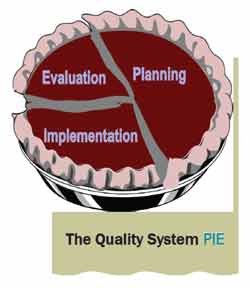About Managing the Quality of Environmental Data at EPA Region 3
Definitions
Data is a quantitative or qualitative representation of values, facts, observations, or ideas in a formalized manner capable of being transmitted, processed, stored, analyzed, interpreted, and/or communicated by some process, whether on paper or in electronic form.
- Qualitative data is descriptive.
- Quantitative data is numerical.
- Primary data are data observed, collected, stored, or generated directly for a specific purpose.
- Existing data are data that have been collected, derived, stored, or reported in the past or by other parties (for a different purpose and/or using different methods and quality criteria). Sometimes referred to as data from other sources.
- Metadata is structured information that describes, explains, locates, or otherwise makes it easier to retrieve, use, or manage an information resource.
Environmental Information includes data and information that describe environmental processes or conditions which support EPA’s mission of protecting human health and the environment. Examples include but are not limited to:
- direct measurements of environmental parameters or processes.
- analytical testing results of environmental conditions (e.g., geophysical or hydrological conditions).
- information on physical parameters or processes collected using environmental technologies.
- calculations or analyses of environmental information.
- information provided by models.
- information compiled or obtained from databases, software applications, decision support tools, websites, existing literature, and other sources and
- design, construction, and operation or application of environmental technology.
If your project involves environmental information, as defined here, you need Quality Assurance.

The Quality System PIE
P = Planning - Development of sampling network design, generation of appropriate data quality indicators, selection of measurement and analytical methodologies, standard operating procedures
I = Implementation - Just do what you planned!
E = Evaluation - Use of review, audit and assessment tools to determine whether environmental data operations comply with EPA Quality Assurance Policy
Quality Assurance Staff Expertise
- QA document preparation and review (e.g., Quality Management Plans, Quality Assurance Project Plans, Sampling Plans, etc.);
- Expert assistance on QA/QC policies, procedures, and requirements;
- Quality system and technical assessments of laboratory and field activities (e.g., audits);
- Assistance with environmental project planning;
- Review/advice on quality requirements for contracts, grants, and interagency agreements;
- Selection of laboratory and field analytical methods;
- Data validation and usability;
- Data interpretation and assessment; and
- Training in all of the above
